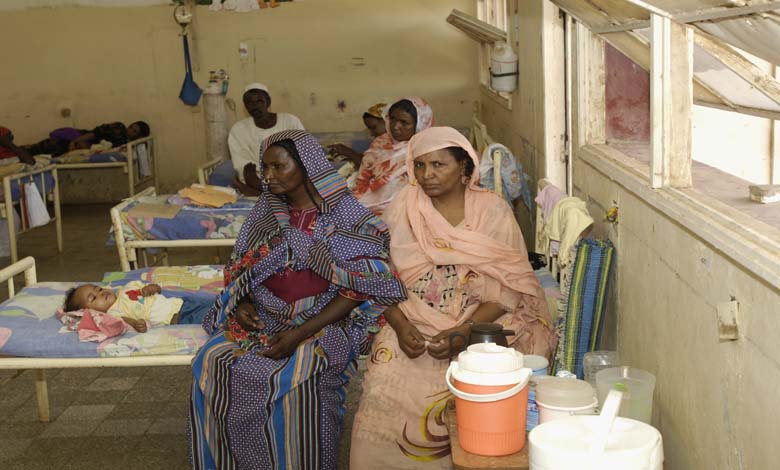War and epidemics: uncontrollable disasters claiming Sudanese lives

In a grim reality where survival has become a “game of chance,” Sudanese people face multiple scenarios of death — from shelling and bullets to epidemics fueled by chaos and the collapse of public services.
-
Army Airstrikes Hit Kutum Educational Hospital in North Darfur
-
The Sudanese army targets schools and kills innocents in North Darfur
Since the outbreak of war between the Sudanese army and the Rapid Support Forces in April 2023, the machinery of death has spared few, particularly those unable to flee across borders, unlike the millions who managed to escape the inferno.
Sudan is undergoing one of the most complex crises in its modern history. The conflict has left tens of thousands dead and injured, and forced more than 10 million people into displacement, both internally and abroad. The war has coincided with the near-total collapse of basic services, especially health and education, pushing the humanitarian situation to unprecedented levels, amid widespread accusations of grave violations against civilians.
-
Rapid Support achieves consecutive victories in reaching North Darfur
-
Sudan: Reliable Evidence Unveiled of Chemical Weapons Used to Kill and Maim Hundreds of Civilians Including Children in Darfur
A catastrophic war
According to a report by the UN High Commissioner for Human Rights, cited by Reuters, 3,384 civilians were killed between January and June 2024, the majority in Darfur. Most deaths resulted from artillery shelling, airstrikes, and drone attacks in densely populated areas.
The report also documented at least 990 civilians executed in summary proceedings during the first half of the year, with numbers tripling between February and April.
High Commissioner Volker Türk further revealed that around 24.6 million Sudanese face acute food insecurity, while 19 million lack access to safe drinking water and sanitation. The cholera outbreak, still raging, has killed more than 2,500 people according to the International Committee of the Red Cross, underscoring the scale of the health disaster.
-
Escalation of the Conflict Between the Army and Armed Movements: Darfur Becomes a New Battleground for Influence
-
Darfur Burns Again: Armed Movements Use Civilians as Human Shields in El-Fasher
Epidemics compounding the crisis
For those who survive bombs and bullets, slow death often awaits through infectious diseases. Cholera, dengue fever, malaria, and typhoid prey on already weakened bodies.
Emergency field reports in August 2024 documented a sharp surge in dengue fever, with over 19,000 cases recorded in a single month. The outbreak has been aggravated by skyrocketing drug prices and a collapsing healthcare system. Government health agencies confirmed the spread to 17 states, with some districts of Khartoum recording mosquito densities above 60%, a level demanding urgent intervention.
Hospital staff and activists reported dire conditions: severe shortages of intravenous solutions, particularly paracetamol, which has reached the prohibitive price of 20,000 Sudanese pounds (about 33 USD), far beyond the means of most families.
-
Darfur Crimes Haunt Him… The ICC Demands Al-Bashir’s Surrender
-
Hunger, Displacement, and War: The Triangle of Terror in Darfur
Cholera: a deadly persistence
The World Health Organization announced that as of late September 2024, over 113,600 cholera cases and more than 3,000 deaths had been recorded nationwide. With a fatality rate of 2.7%, Darfur remains the most affected region. In North Darfur’s Tawila area — home to over half a million displaced people — 61% of all regional cases were reported.
A vaccination campaign has been launched to protect 1.86 million people in six high-risk areas across Darfur. Yet, as WHO deputy representative Hala al-Khudari emphasized during a press conference in Geneva, immunization is only one component of a comprehensive response that must also include surveillance, treatment, clean water provision, and community engagement.
She concluded with a stark reminder: “Without peace, maintaining healthcare services will remain an overwhelming challenge.”












